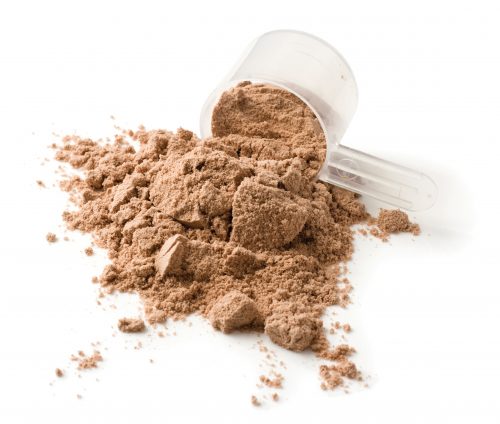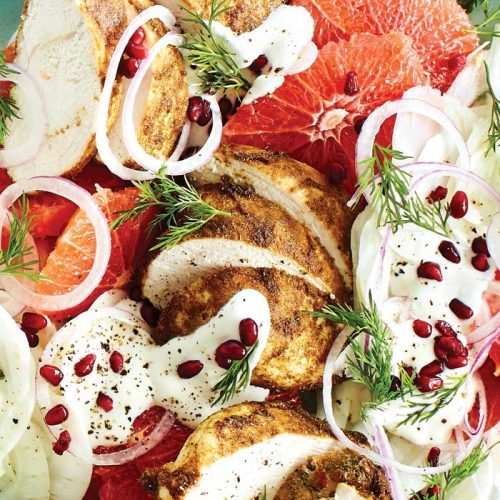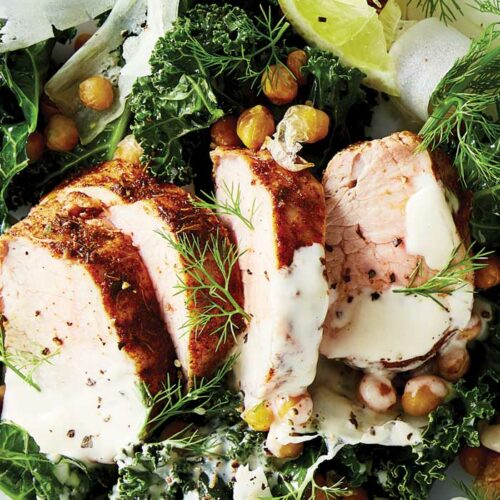
First, it was protein balls and shakes. Now, even some of our breads highlight it as an ingredient. But do we actually need so much? Dietitian Brooke Longfield has the answers.
Protein is being billed as the star ingredient in many of our everyday food items, so you’d be forgiven for thinking that we all need to be eating more of it. Let’s look at the facts.
Protein is key to feeling full
Here’s the good news: Protein helps control our appetite and gives that satisfying feeling of fullness.
Our body needs a fresh supply of protein each day. Health experts believe our appetite is regulated by hitting a daily fixed target of protein from our food. So, if we have a diet that includes a lot of starchy, low-protein foods (think bread and sugary snacks), we’ll need to eat a lot more food in order to reach that all-important protein target. By contrast, if we eat more protein-rich foods – for example, eggs, dairy, nuts, meat, fish – we then hit that target more quickly, triggering satiety and satisfaction.
Given protein’s ability to control our appetite, choosing to eat foods rich in protein is helpful for weight maintenance.
One of the world’s largest diet studies found that people on a high-protein diet that included low-GI carbs were more likely to keep weight off after 12 months, compared with people on a much lower protein diet.
What else does protein do?
Protein is essential for building muscles, and having more muscle mass helps speed up our metabolism. Protein supplements and snacks have grown in popularity since a number of studies found that eating protein within half an hour of exercise can assist with muscle growth. But a glass of milk, a tub of yoghurt or a boiled egg is just as effective as expensive protein balls, bars and drinks.
How much do I need each day?
Not as much as you think. We’re advised to get between 15 to 25 per cent of our energy (kJ) from protein, and the 2008-09 adult nutrition survey found we get around 16.5 per cent, on average. Only around two per cent of people under 70 are estimated to have inadequate intake. So most of us are getting enough protein. Around 78-130g of protein is all most of us need in a day.
Can I have too much protein?
More is not always better. Anything more than what we need gets stored by our body as fat. A very high-protein diet puts strain on our kidneys and liver which can be dangerous.
But the main problem with focusing excessively on eating high-protein foods is that we’re paying less attention to other foods, such as vegetables, fruit and wholegrain carbohydrates.
When should I eat protein?
When we think protein, it’s easy to focus on eating large portions of protein-rich steak and chicken at the evening meal.
A better idea is to space our protein intake throughout the day. Including protein foods at breakfast and lunch can help prevent the urge to snack on starchy carbs such as chips.
A healthy portion of red meat is about the size and thickness of your palm. For fish, it’s a bit more.
If you find your tummy is rumbling between meals, try one of these high-protein snacks:
- small tub of unsweetened low-fat yoghurt
- handful (30g) of mixed nuts
- smoothie made with trim milk
- slice of cheese on a wholegrain cracker
Are protein balls and bars ok?
Many of these are made from highly refined protein extracts.
Marketed as ‘high-protein’ snacks, they are also often loaded with artificial additives, fat and sugar (or artificial sweeteners) to help them taste good. So, they can be high in kilojoules.
Ideally, aim to eat whole foods that are naturally rich in protein, such as nuts, eggs and milk, as they’ll provide additional nutrients essential for our good health.
Article sources and references
- Australian Bureau of Statistics. 2014. Australian Health Survey: National First Results – Foods and Nutrients, 2011-12. Accessed July 2016http://www.ausstats.abs.gov.au/Ausstats/subscriber.nsf/0/4683FD7315DFDFDBCA257D080014F9E0/$File/australian%20health%20survey%20nutrition%20first%20results%20-%20food%20and%20nutrients,%202011-12.pdf
- Australian Institute of Sport (AIS). 2009. Increasing muscle mass. Available at ausport.gov.au Accessed July 2016https://www.sportaus.gov.au/ais
- Australian Institute of Sport (AIS). 2009. Protein. Available at ausport.gov.au Accessed July 2016.https://www.ausport.gov.au/ais/nutrition/supplements/resources_new/supplements_and_sports_foods
- Better Health Channel 2014. Protein. Available at betterhealth.vic.gov.au Accessed July 2016https://www.betterhealth.vic.gov.au/
- Gosby et al. 2011. Testing protein leverage in lean humans: A randomised controlled experimental study. PLOS ONE. 6: e25929https://journals.plos.org/plosone/article?id=10.1371/journal.pone.0025929
- Larson et al. 2010. Diet’s with high or low protein content and glycemic index for weight-loss maintenance. N Engl J Med. 363:2102-113https://www.ncbi.nlm.nih.gov/pubmed/21105792
- Marsh et al. 2012. Protein and vegetarian diets. MJA Open. 1 Suppl 2: 7-10https://www.mja.com.au/journal/2013/199/4/protein-and-vegetarian-diets
- National Health and Medical Research Council. 2015. Nutrient Reference Values for Australia and New Zealand – Protein. Available at nrv.gov.au/nutrients/protein Accessed July 2016https://www.nrv.gov.au/nutrients
- University of Otago and Ministry of Health. 2011. A Focus on Nutrition: Key findings of the 2008/09 New Zealand Adult Nutrition Survey. Wellington: Ministry of Healthhttps://www.health.govt.nz/publication/focus-nutrition-key-findings-2008-09-nz-adult-nutrition-survey
www.healthyfood.com










